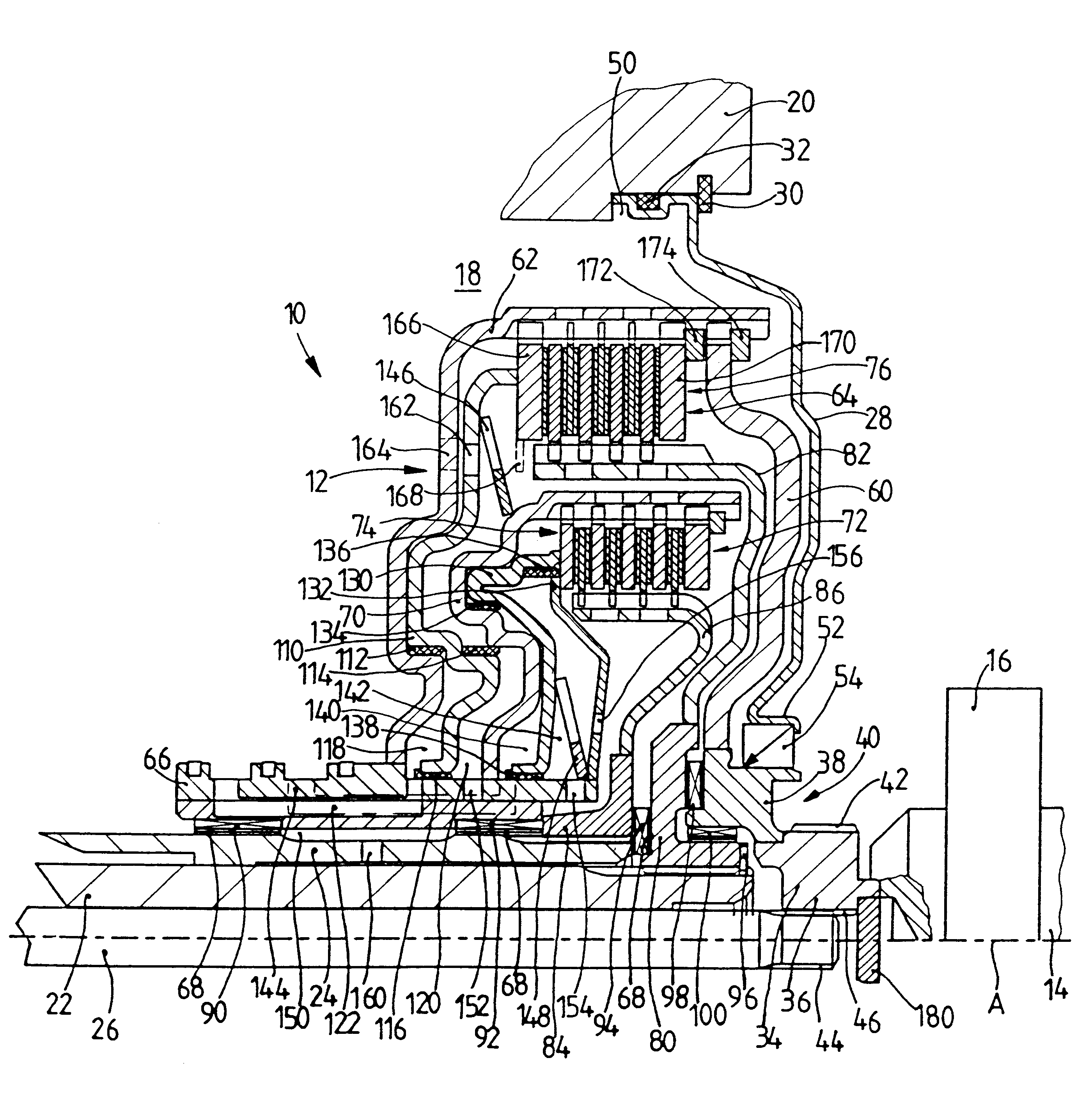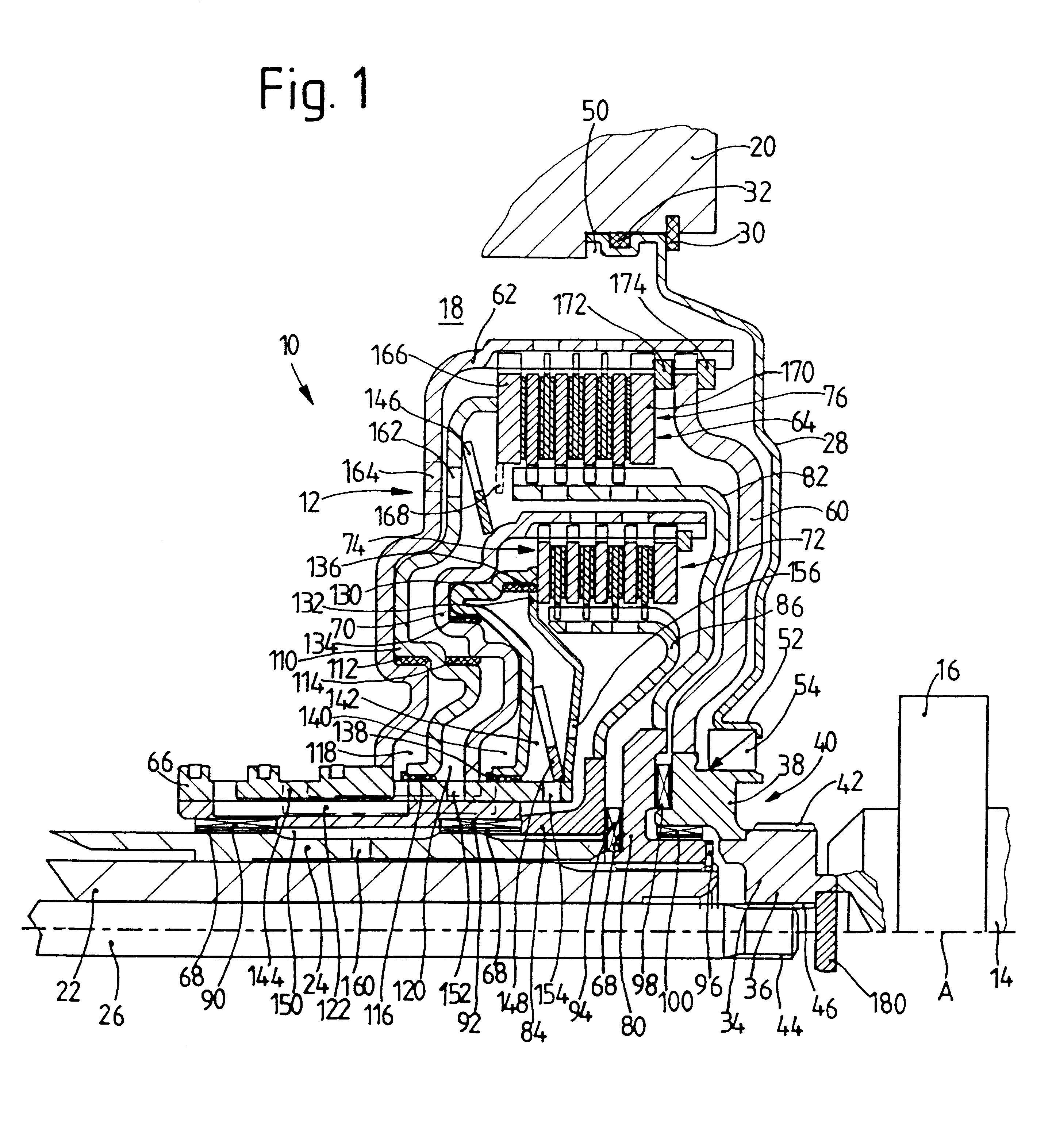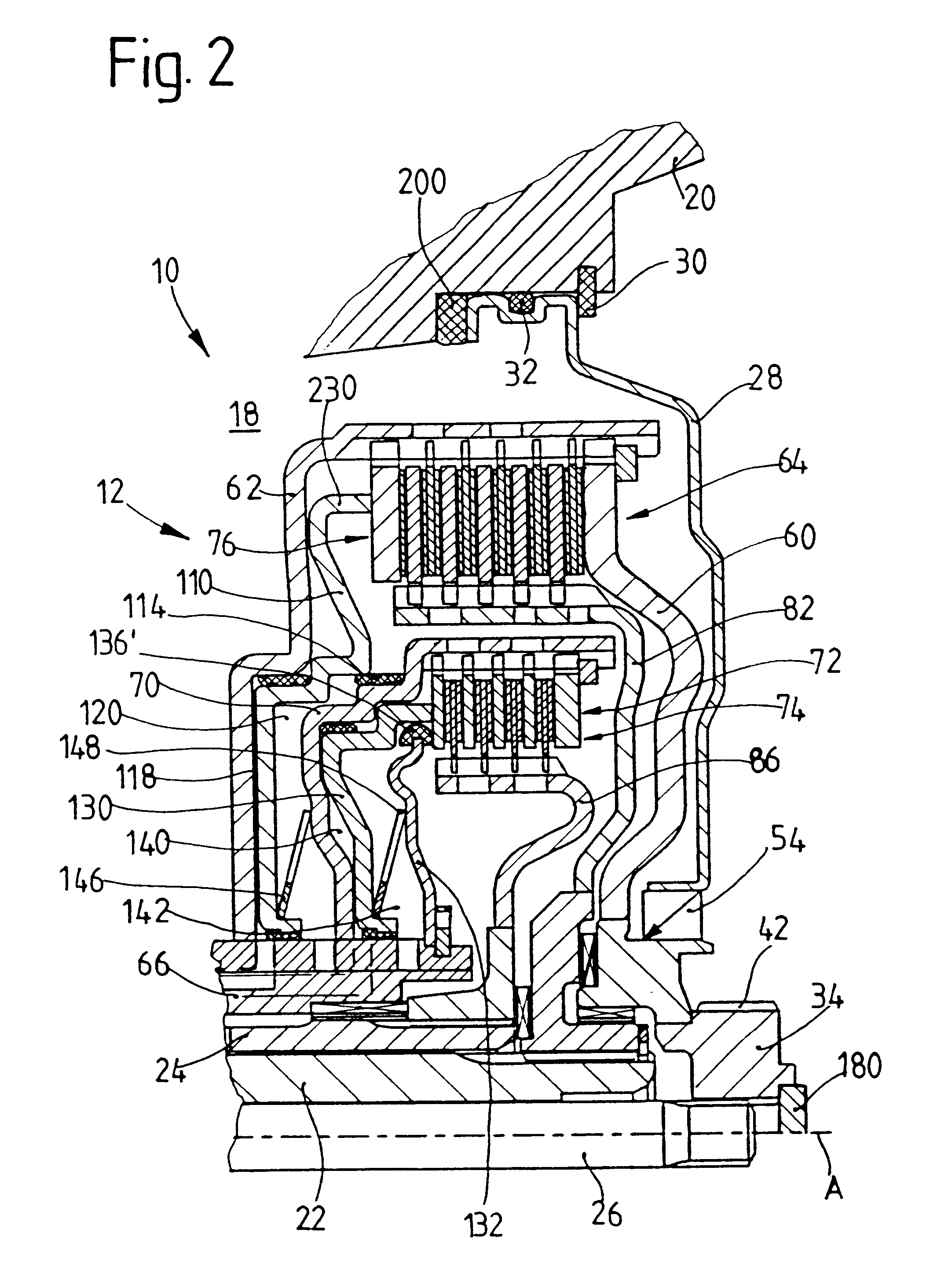Obviously, starting processes of the type described above lead to high slippage with a correspondingly extensive development of heat.
This presents the problem of carrying away this heat from the area of the friction clutch serving as starting clutch.
Further, a correspondingly high wear of the friction clutch must be taken into account.
Moreover, heating of the friction clutches is accompanied by changes in the
coefficient of friction of the friction clutches, so that control of the release mechanisms of the two friction clutches, and therefore control of the two friction clutches relative to one another, can be appreciably impaired.
Since inaccuracies or changes in the functional matching of the two friction clutches relative to one another caused by heat can have the result that a torque ratio not intended in the shifting process is applied to the transmission input shafts, shifting processes in the shift transmission can be subjected to load.
The synchronization in the shift transmission can be overtaxed in this way, so that, in the worst case, the shift transmission can be damaged to the point of complete failure, apart from disadvantages with respect to efficiency which occur in any case.
On the whole, mismatching between the two friction clutches caused by heat is incompatible with a problem-free
torque transmission in shifting processes in the shift transmission without interruption of
tractive force and without jerking during shifting.
Another problem area in a double-clutch device relates to starting processes carried out in opposition to an inclination, wherein the motor vehicle must be prevented from rolling backward, or those which are used when parking at the lowest possible speed, for example, for precise positioning of a motor vehicle in a
parking space.
Although the torques to be transmitted in such starting processes lie well below those occurring under the operating conditions described above, especially in
car racing, an intensive heating of the respective friction clutch or even both friction clutches can occur, resulting in the problems detailed above.
The risk of intensive overheating exists not only in a
dry friction clutch, but can also occur in so-called "wet" friction clutches, possibly in the form of a disk or plate clutch, which are operated by the action of a viscous operating medium such as
hydraulic fluid.
In
spite of the liquid cooling, heating of the friction clutches is also a considerable problem in plate clutches because the operating medium, which usually flows through friction facing grooves or the like to carry off the heat, cannot be guided through between the plates in optional quantity.
The reason for this is that, on one hand, excessive flow through the friction facing grooves or the like would build up a counterpressure between the friction surfaces of two adjacent plates and would therefore reduce the capacity of the friction clutches to transmit torque (with a corresponding increase in slip and therefore additional generation of friction heat, so that the problem of overheating is exacerbated) and, on the other hand, the operating medium could be overheated and destroyed when flowing through between the plates.
Overheating in plate clutches can result in that the friction surfaces can no longer separate from one another completely during a disengaging process and, consequently, torques can still be transmitted via the clutch which should be disengaged, so that considerable drag torques can reach the associated shift transmission.
Within the framework of investigations undertaken by the present Applicants in connection with double-clutch devices, it was shown in general that wet-type clutches exhibit sealing problems and problems relating to output losses.
Further, it was shown that boundary conditions relating to the available axial and radial installation space could be adhered to only with difficulty, if at all, based on the previously known concepts.
With regard to clutches, possibly, diaphragm clutches, which are actuated by pistons integrated in the clutch device, the arrangement of the
piston chambers associated with the pistons proved especially problematic.
However, it has been shown that such a construction of the plate clutch arrangement promotes unwanted torsional vibrations in the
drivetrain.
This can lead to problems when the plate which can be brought into frictional engagement with the friction surface is a plate having a facing, for example, a paper plate, and projects radially over the friction surface of the
torque transmission member.
Due to uneven area pressure (the plate is generally too thick and consequently not sufficiently flexible to ensure a uniform area pressure), so-called facing splitting can result.
This reason for this step is that uneven cooling of the plates not having friction facings, for example,
steel plates, regularly occurs along their radial height, which can result in deformations (so-called sagging) of the plates with the risk that this could lead to an uneven area pressure in the plate stack.
This involves the risk of facing splits due to uneven pressure.
 Login to View More
Login to View More  Login to View More
Login to View More 


